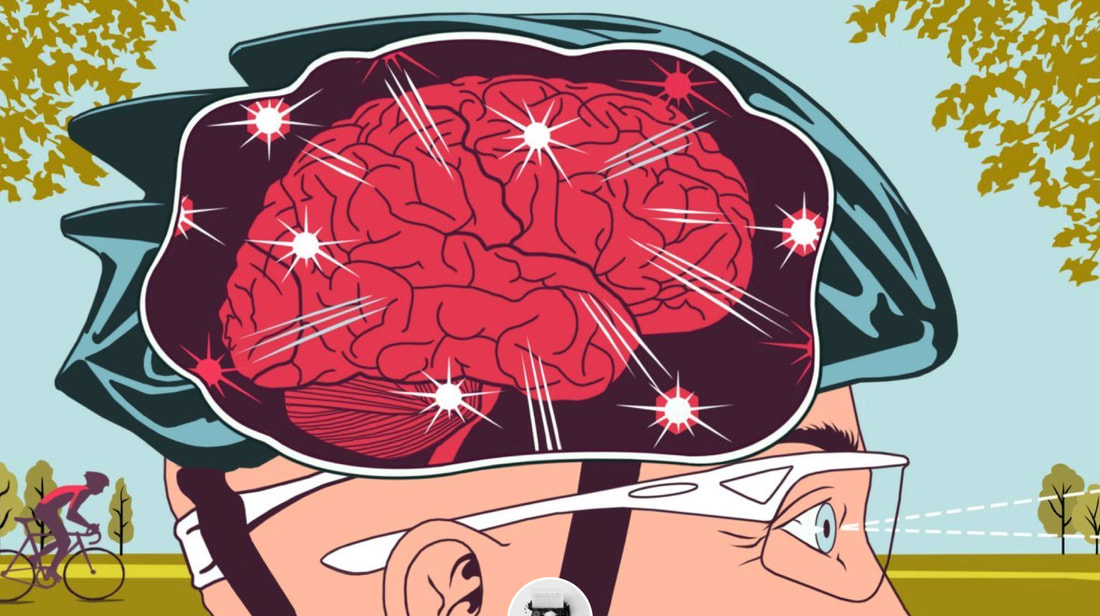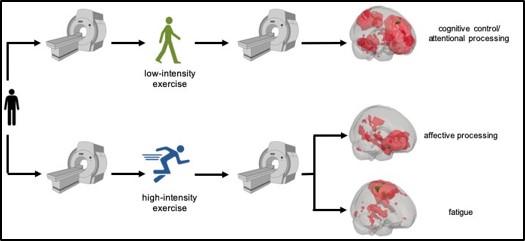|
We all know that exercise is needed for a multitude of health reasons. But our often-sedentary lifestyles now as compared to years past have clearly taken a toll on our bodies: for the first time in U.S. history, younger generations are expected to live shorter, unhealthier lives than their parents. That’s a statistic that is truly frightening on a number of levels from worrying about the fate of future generations to realizing the impact that more chronic illnesses will have on an overwhelmed healthcare system. We have to change this pattern and we can all potentially start by doing some form of exercise. You say you don’t like jogging or have hours to spend at the gym? Well, even a moderately brisk walk for just 10 minutes, three times a day has been shown to be of benefit. Not only is exercise good for weight control and overall health, but scientists for decades have studied and identified the benefit of exercise for the brain. Important neurotransmitters are released during exercise and these are basically like “Miracle Grow” you buy for plants and flowers. These critical brain chemicals help build new neurons and new brain connections. Imagine then that your brain is actually getting YOUNGER and “smarter” with exercise, not to mention it also boosts our mood, focus and attention span. What’s not to love about that?! But what type of and how much exercise is best? New research now shows that overdoing it with very high intensity exercise routines may actually do more harm than good in some people. For example, absolute mortality rates have increased in long distance runners over the last decade and the fatality rate for triathlons is approximately twice that of marathons. Sudden cardiac death in some endurance athletes is thought to result from mechanisms like excessive oxidative stress from overtraining, which may cause adverse cardiac structural and electrical cardiac remodeling. Study researchers who looked at the Potential Adverse Cardiovascular Effects From Excessive Endurance Exercise concluded that on the basis of animal and human data, “the cardiovascular benefits of vigorous aerobic exercise training appear to accrue in a dose-dependent fashion up to about 1 hour daily, beyond which further exertion produces diminishing returns and may even cause adverse CV effects in some individuals.” Back to the BRAIN and exercise… I just reviewed this recent publication that used functional magnetic resonance imaging (fMRI) to peer into the brain to shed light on the ongoing question as to what type of exercise is best for the brain. Is it high intensity interval training (HIIT) or is a low intensity workout better? HIIT is a form of cardio interval training that alternates short bursts of intense anaerobic exercise with less intense recovery periods. Low-intensity cardio workouts call for typically 30 to 60 minutes spent at the fat-burning sweet spot of roughly 60 percent of maximal heart-rate effort. A study published in 2019 indicates that slower exercise could actually fast-track your results. Resting state Functional MRI is revolutionizing ways to study brain connectivity patterns. This is a non-invasive technique that measures changes in the amount of oxygenated blood supplied to various regions of the brain, and it's use has emerged as an important biomarker for "making connections'’ in the brain (e.g. those neurotransmitters we talked about earlier) What They Did in This Study: Twenty-five male athletes underwent individual fitness assessments using an incremental treadmill test. On separate days, they performed on a treadmill, ‘low’ (35% below lactate threshold) and ‘high’ (20% above lactate threshold) intensity exercise bouts of 30 min. The -fMRI and Positive and Negative Affect Scale (PANAS) were acquired before and after each exercise bout. The Results: -There was a significant increase in positive mood after both exercise intensities and no significant change in negative mood. -The results of the resting state fMRI tests showed that low-intensity exercise led to increased functional connectivity in networks associated with cognitive processing and attention. High-intensity exercise, on the other hand, led to increased functional connectivity in networks related to affective, emotional processes. High-intensity exercise also led to a decreased functional connectivity in networks associated with motor function. Their Conclusions: Researchers reported that “our data seem to agree with the general notion, that beneficial effects of exercise are preferentially found in low to intermediate exercise ranges (according to physiological exercise recommendations)." The study also indicated that HIIT or "acute exercise" stimulates the hypothalamic-pituitary-adrenal (HPA) axis in an intensity-dependent fashion, resulting in increased cortisol levels. Some studies have shown that moderate increases in cortisol enhance working memory whereas the elevation of cortisol over a certain level serves to impair memory. The prefrontal cortex is characterized by a high cortisol receptor density. Or could brain-derived neurotrophic factor (BDNF) release be more profound after moderate exercise? This image does a good job of summing up the findings. The takeaway
Whether you run half-marathons or walk your dog around the neighborhood daily, the undeniable fact is that our brains work better with consistent exercise - remember to always check with your family doctor first before beginning any new program. Strength training is important as well and so are activities that calm your body and mind like yoga, tai chi, stretching and meditation. So let’s all keep moving and build a better, healthier brain AND body for years and years to come!! In health or, as my Grandma Toman would say, “Zivijio!” --Dr. Suzy Gazda Sources: Potential Adverse Cardiovascular Effects From Excessive Endurance Exercise https://www.ncbi.nlm.nih.gov/pmc/articles/PMC3538475/ Modulation of Distinct Intrinsic Resting State Brain Networks by Acute Exercise Bouts of Differing Intensity https://www.ncbi.nlm.nih.gov/pmc/articles/PMC6971822/
0 Comments
Your comment will be posted after it is approved.
Leave a Reply. |
AuthorDr. Suzanne Gazda, Integrative Neurology Archives
February 2024
Categories |


 RSS Feed
RSS Feed